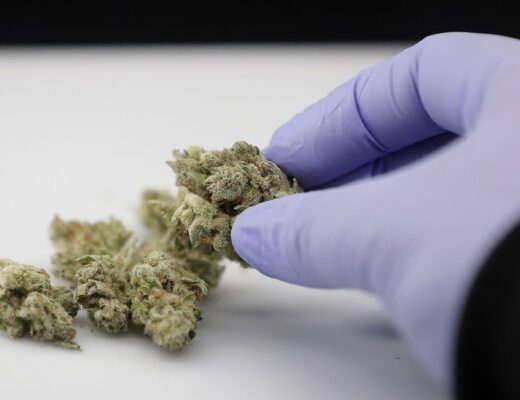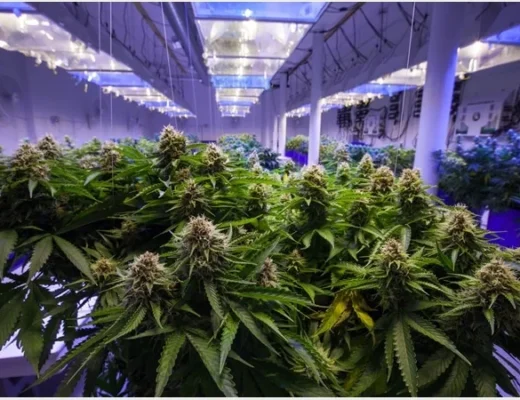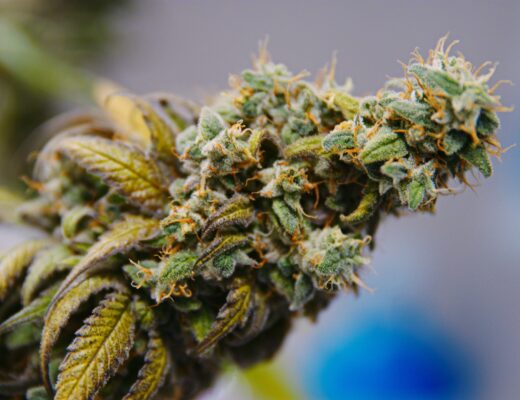
When you think of marijuana, do you ever wonder about its historical roots? Believe it or not, the history of hashish (a concentrated form of cannabis) can be traced back to 8000 BCE.
This blog post will take you on a journey through time, from ancient civilizations using cannabis for rituals and medication to today’s global legalization movements canada. Ready for an exciting trip into hashish history?
Ancient Use of Cannabis and Hash
Cannabis was domesticated as early as 8000 BCE, and there is evidence of its use as a crop in ancient civilizations from 7000 BCE to 476 CE.
Domestication of cannabis in 8000 BCE
Archaeologists unearthed evidence that suggests the early domestication of cannabis in 8000 BCE. This took place in what we now know as Taiwan and China, showcasing humanity’s centuries-old relationship with this versatile plant.
At this time, ancient civilizations primarily used hemp for their fibres to make clothing, ropes, and other essential tools. Cannabis seeds served as a valuable source of food, too. Surprisingly, they cultivated it not mainly for intoxicating products but more because of its practical value.
Evidence of cannabis as a crop in ancient civilizations (7000 BCE – 476 CE)
Ancient civilizations dating back to 7000 BCE cultivated cannabis as a crop, providing evidence of its long history. Through archaeological findings and ancient texts, we have learned that cannabis was grown for various purposes in these societies.
From the Egyptians and Mesopotamians to the Chinese and Greeks, cannabis played a significant role in their cultures. It was utilized for medicinal purposes, religious rituals, and even as a source of fibre for textiles.
This demonstrates the deep-rooted connection between humans and cannabis throughout history.
Evidence from this period includes artifacts such as hemp seeds found in Viking burial sites, indicating the plant’s importance even back then. In addition to its practical uses, cannabis held spiritual significance among many ancient civilizations.
From Ancient Egypt’s association with Osiris (god of resurrection) to Hindu rituals involving Lord Shiva (the god who consumed bhang), cannabis had a place within their religious practices.
Spread of cannabis across the globe (500s-1400s)
Cannabis had a remarkable journey globally from the 500s to the 1400s. During this time, explorers and traders significantly spread cannabis seeds and plants to different regions.
The Vikings were known for using hemp during their burials, demonstrating early connections between cannabis and cultural practices. In the Arab world, cannabis use became prevalent within certain religious sects during this period.
Additionally, Arabic physicians began recognizing its medicinal properties, leading to further exploration of its potential benefits. As trade routes expanded, so did the reach of cannabis cultivation, with it eventually reaching Europe by the 1300s.
Role of hemp in the Age of Exploration (1500s-1700s)
Hemp was crucial during the Age of Exploration from the 1500s to the 1700s. Sailors relied on hemp for many essential items, such as ropes, sails, and clothing. The strong fibres of hemp were perfect for maritime use, withstanding harsh weather conditions and providing durability.
It was said that Christopher Columbus’s ships were equipped with hemp products. Without hemp, the exploration of new lands and trade routes would have been much more challenging during this pivotal time in history.
Modern History of Cannabis and Hash
The modern history of cannabis and hash includes significant milestones such as the discovery of the endocannabinoid system in 1988, the legalization of medical cannabis in California in 1996, and global support for its use.
Read on to uncover more fascinating details about the journey of this remarkable plant.
Renewed interest in cannabis in the West (1842)
In 1842, there was a renewed interest in cannabis in the Western world. People started recognizing its potential medicinal properties and more closely studying its effects. Researchers found that cannabis could be used to treat various ailments, including pain, insomnia, and anxiety.
This newfound appreciation for the plant led to further exploration of its pharmacological benefits and set the stage for future developments in cannabis research and cultivation. The increased interest in cannabis eventually paved the way for legalization efforts and the emergence of today’s thriving cannabis industry.
The Club of Hashish-Eaters (1844-1849)
The Club of Hashish-Eaters was a group formed in the mid-19th century that experimented with hashish for recreational purposes. They believed that the use of cannabis could lead to profound spiritual and intellectual experiences.
Members would gather together, consume concentrated forms of hashish, and then discuss their hallucinations and visions. The club’s meetings often involved poetry readings, music performances, and philosophical discussions.
Despite being short-lived, the Club of Hashish-Eaters played a significant role in popularizing the use of cannabis as a recreational drug during this period.
Prohibition of cannabis in some Arab countries (1890)
Some Arab countries began prohibiting cannabis in 1890. This decision made the possession, sale, and use of cannabis illegal in these nations. The move was driven by concerns over the potential adverse effects of marijuana on society, including addiction and intoxication.
As a result, cannabis became a controlled substance in these countries, with strict laws enforced to deter its cultivation and consumption. These measures remain in place today, shaping the legal and cultural landscape around cannabis in the Arab world.
International regulation at the International Opium Convention in Geneva (1925)
The International Opium Convention in Geneva, held in 1925, marked a significant moment of international regulation for cannabis and other psychoactive substances. This convention aimed to address the global drug trade and establish control measures for narcotics like opium, cocaine, and cannabis.
As a result, it paved the way for stricter regulations on the production, distribution, and use of these drugs. The inclusion of cannabis in this convention set the stage for subsequent international efforts to restrict its cultivation and consumption.
Despite evolving attitudes towards cannabis in recent years, this convention remains an essential milestone in the history of marijuana regulation on a global scale.
Impact of propaganda film “Reefer Madness” (1936)
The propaganda film “Reefer Madness” (1936) had a significant impact on shaping public opinion about cannabis. The film portrayed marijuana use as causing extreme violence, promiscuity, and insanity.
It depicted users as morally corrupt and painted cannabis as a dangerous drug that could lead to addiction and criminal behaviour. This exaggerated portrayal fueled the fear and stigma surrounding marijuana, leading to further restrictions and the continued criminalization of cannabis in the United States.
Beginning of cannabis prohibition in the U.S. (1937)
In 1937, cannabis prohibition began in the United States. The passage of the Marihuana Tax Act made it illegal to possess or distribute cannabis without paying a high tax. This marked a significant turning point in American drug policy and set the stage for decades of criminalization and stigma surrounding cannabis.
Despite changing attitudes towards marijuana in recent years, this historic decision continues to shape drug laws and regulations today.
Impact of the Hippie Trail in spreading cannabis culture (1960s-70s)
The Hippie Trail had a significant effect on spreading cannabis culture during the 1960s-70s. As young Westerners embarked on journeys across Asia, they encountered different ways of life and experienced the use of cannabis in various regions.
This exposure to new cultures and practices led to an exchange of ideas and a growing acceptance of cannabis as a recreational drug. The Hippie Trail played a crucial role in popularizing cannabis use among Western youth, ultimately contributing to the widespread adoption of cannabis culture that continues today.
Discovery of the endocannabinoid system (1988)
Scientists made a groundbreaking discovery in 1988 when they uncovered the endocannabinoid system. This complex network of receptors and chemicals within our bodies plays a crucial role in regulating various physiological processes.
The endocannabinoid system helps maintain balance and homeostasis, influencing pain perception, mood regulation, immune response, and appetite control. Understanding this system has opened up new possibilities for medical research and the development of cannabis-based therapies to address various health conditions.
Legalization of medical cannabis in California (1996)
California made a groundbreaking move in 1996 by legalizing medical cannabis. This decision allowed patients with certain qualifying conditions to access marijuana for medicinal purposes.
It marked a significant shift in the perception and acceptance of cannabis as a legitimate form of medicine, paving the way for other states to follow suit in subsequent years. With this legalization, those suffering from chronic pain, cancer, and other debilitating illnesses could now explore alternative treatment options that included the use of medical cannabis.
The move also sparked a national conversation about the potential benefits of marijuana and set off a wave of legislative changes across the country aimed at decriminalizing or legalizing its medical use.
The legalization of medical cannabis in California opened new doors for patients seeking relief from their ailments. By recognizing the therapeutic properties of marijuana and allowing its regulated use, it gave individuals more control over their own healthcare choices.
Global legalization and support for cannabis use (2012-2018)
Global legalization and support for cannabis use have seen significant growth between 2012 and 2018. Numerous countries have implemented legal frameworks that allow for the cultivation, distribution, and consumption of cannabis for both medicinal and recreational purposes.
This shift towards legalization has been driven by increasing scientific research highlighting the potential therapeutic benefits of cannabis, as well as changing attitudes towards its use.
As a result, more individuals have gained access to cannabis products, leading to a booming industry with expanded opportunities in areas such as medical treatment, wellness products, and economic development.
Conclusion
Let’s wrap up the fascinating journey through the history of hash. From its ancient roots as a sacred and medicinal plant to its modern-day association with counterculture and legalization movements, cannabis has played a significant role across cultures and periods.
Today, we continue to uncover new uses and benefits of this versatile plant, challenging societal perceptions and embracing its potential for healing and enjoyment. Keep exploring the rich tapestry of cannabis history – there’s still plenty more to discover!


